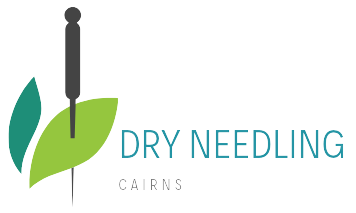Dry Needling for shoulder pain in Cairns.
Dry Needling may be able to assist with the pain and discomfort of shoulder problems.
Make an appointment today –
Please book online here https://dryneedlingcairns.com.au by following the book online button or send a text message to reach us on 0408054538.
You can also click on this and make an appointment time or check availability http://cairns-massage-cairns-acupuncture.au1.cliniko.com/bookings
Dry needling focuses on putting needles into trigger points in the body. Trigger points are points found in the muscle that trap the nerve and then create pain either at the site (of the trigger point) or refer the pain to further up or down the body from the trigger point location. Trigger points in the shoulder at found in lots of different places around the should joint.
For example there are trigger points on the shoulderblade that refer pain around that area at the back of the shoulder but also may prevent the movement and normal functioning of the shoulder for example – person cannot reach behind due to trigger points in scapula and tight muscles here. Doing dry needling on this area releases the pain and clears the trigger point and restores movement to the shoulder.
Another place a trigger point may be located is the upper trapezius muscle and also the supraspinatus muscle – you may not be able to lift your arm out to the side and also you may not be able to move your neck very well in certain positions. The pain may refer up your neck and also to the top of your arm where your deltoid muscle it.
Shoulder pain and injury are common. Your shoulder is the most mobile of all your joints. Just think about how much it can actually move.
Shoulder Pain
The reason for this movement is a very small joint contact zone. This essentially means that your shoulder is quite unstable. That is why your shoulder muscles are so vital to a normally functioning shoulder.
In most cases, if you are suffering shoulder pain it is because your muscles are simply not strong enough or they are uncoordinated.
Luckily, both of these dysfunctions can be normalised after a quality assessment and injury-specific exercises.
Most shoulder pain is caused by one of the following categories:
- Rotator Cuff
- Bursitis Shoulder
- Shoulder Dislocation (Instability)
- Frozen Shoulder
- Fractures
- Shoulder Arthritis
The beginning of Cairns dry needling business –
This is a story that started in Victoria, went all over the world and came back and landed in Cairns –
In 2008 Tanya traveled the world working as an dry needling practitioner, hypnotherapist, kinesiologist, spa therapist and Massage therapist on Cruise Ships around the world for Royal Carribean and Princess Cruise lines.
After five promotions to bigger and better cruise ships as a reward for doing a great job she decided to settle back in Australia.
Cairns Dry needling was born….Tanya now uses all her treatment modalities to run a successful and busy clinical practice!
What is Dry needling
Dry needling is an important part of Traditional Chinese Medicine, along with Chinese herbal medicine, tui na (orthopedic massage) and Qi Gong (meditation and energy healing.)
With a history of almost 3000 years it is still used extensively today to treat literally millions of people around the world.
dry needling affects the physiological functioning of the body by the insertion of fine needles into particular reflex points all over the body.
How does Dry needling work?
Medically dry needling works by regulating carious systems in the body – hormonal, nervous, immune, circulatory, muscular etc.
Does it Hurt?
Some sensitive patients do feel some discomfort when the needles first go in, but most people are pleasantly surprised at how comfortable dry needling therapy is, often falling asleep on the treatment table. The needles are generally between 0.2 and 0.25mm in width. Five of these fit in the bore of one hyperdermic needle….they are as fine as a human hair!
They are inserted quickly to minimize skin pain, and when correctly stimulated, there is a feeling of tingling, mild cramping or an electric sensation at the point.
How deep the needles are inserted varies from a few millimetres to a couple of inches or more depending on the size of the patient and where the point lies on the body.
Send a text to Tanya on 0408 054 538 or book online here via the book online button on the home page. Or go to www.cairnsmassage.net.au and follow the book online button on that website.
Dry needling’s primarily focused on reducing pain and restoring function through the release of myofascial trigger points in the muscle.
What is a Myofascial Trigger Point?
A myofascial trigger point, also known as a knot in the muscle, is a group of muscle fibres that have shortened when activated but have not lengthened back to a relaxed state after use. A myofascial trigger point develops a sensitive nodule in the muscle (Simons, Travell & Simons, 1999). In addition to this nodule, the remainder of the muscle also tightens to compensate (Simons et al., 1999; Simons, 2002). This hypersensitivity occurs as the muscle fibres become so tight that they compress the capillaries and nerves that supply them (McPartland, 2004; Simons et al., 1999). As a result, the muscle cannot frequently move, obtain a fresh blood supply containing oxygen and nutrients, or flush out additional acidic chemicals (McPartland, 2004; Simons et al., 1999). The presence of a myofascial trigger point in a muscle can lead to discomfort with touch, movement and stretching, decreased joint motion, and even a temporary loss of coordination (Simons et al., 1999).
How Does Dry Needling Work?
Dry needling assists with decreasing local muscular pain and improve function by restoring a muscle’s natural ability to lengthen and shorten by releasing myofascial trigger points.
What Does Dry Needling Do?
When the delicate filament needle inserts into the centre of a myofascial trigger point, blood pools around the needle, triggering the contracted muscle fibres to relax. This reaction, in turn, leads to the decompression of the local blood and nerve supply. It also helps to provide those fibres with fresh oxygen and nutrients and flushing away any additional acidic chemicals.
What Causes a Myofascial Trigger Point?
A myofascial trigger point develops as part of the body’s protective response following:
- injury – the muscle will tighten in an attempt to reduce the severity of an injury;
- unexpected movements, e.g. descending a step that is lower than initially anticipated;
- quick movements, e.g. looking over your shoulder while driving;
- change in regular activity or muscle loading, e.g. an increase in the number or intensity of training sessions for sport;
- sustained postures e.g. prolonged sitting for work or study;
- nerve impingement – the muscle will tighten to protect the nerve;
- stress;
- illness (bacterial or viral);
- nutritional deficiencies, or;
- metabolic and endocrine conditions.
(Simons, et al., 1999)
When Is Dry Needling Treatment Recommended?
Dry needling can assist in treatment:
- to help release myofascial trigger points (muscle knots);
- to assist with pain management, and;
- to restore movement at a joint if inhibited by myofascial trigger points.
What Will You Feel During Dry Needling Treatment?
During a dry needling treatment, you may feel a mild sensation as the needle inserts and withdraws. Patients don’t report any discomfort during needle manipulation.
A brief muscle twitch may occur during a dry needling treatment. This twitch may happen when the needle directly stimulates a myofascial trigger point.
Where Does Dry Needling Fit Within Your Rehabilitation Program?
Dry needling is one of many techniques that your physiotherapist can utilise to assist with your rehabilitation. We combine dry needling with other physiotherapy techniques, including massage, manual therapy, and exercise prescription.
What are the Side Effects of Dry Needling?
Every form of treatment can carry an associated risk. Your physiotherapist can explain the risks and determine whether dry needling is suitable for you based on your injury and general health.
When dry needling occurs, single-use, sterile needles are always used and disposed of immediately after using a certified sharps container.
Is Dry Needling Safe?
Everybody is different and can respond differently to various treatment techniques, including dry needling. In addition to the benefits that dry needling can provide, some side effects may occur, including spotting or bruising, fainting, nausea, residual discomfort or even altered energy levels. However, these symptoms should last no longer than 24 to 48 hours after treatment.
Can You Exercise After Dry Needling?
We recommend avoiding strenuous or high impact activities immediately after dry needling to allow the body time to recover and maximise the treatment benefits.

